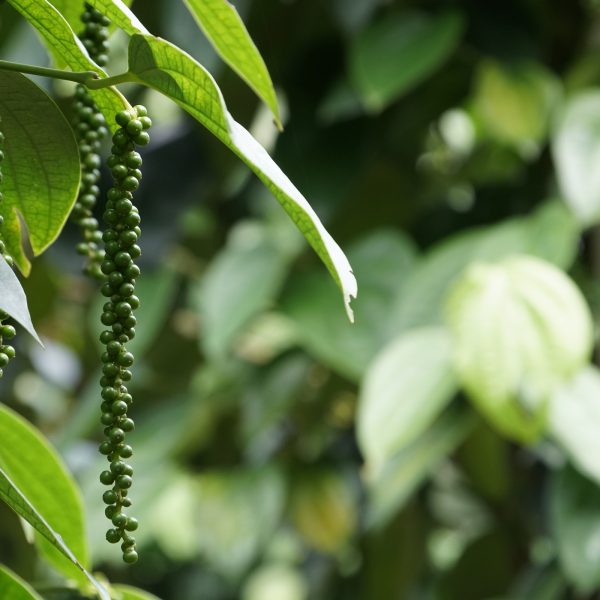-
How does it feel?
Chicory has an intense bitter taste with a sweet after taste. It could also be described as having nutty, woody, and earthy tones. Chicory root shares some similar taste qualities to ground coffee beans.
As a bitter astringent medicine, chicory offers a cooling and cleansing action upon the body systems. Herbs that have a bitter taste will directly support the function of the liver. The liver is an important organ that deals with metabolism, nutrient storage as well as detoxification.
-
What can I use it for?
Bitter herbs like chicory are extremely valuable in herbal medicine as they can be taken to improve the function of the eliminatory organs such as the liver and the gallbladder. By optimising the function of the liver they are able to reduce circulatory toxins and excess heat (inflammation) throughout the body.
As a cooling bitter, chicory gently stimulates the digestive system whilst also being highly regarded as a herb that can help balance blood sugar levels. Chicory may also be used to help regulate the appetite and curb sugar cravings.
Bitter herbs are great to incorporate into ones daily practice. By this detoxifying action, chicory will offer its benefits to all the body systems.
-
Into the heart of chicory
Chicory root is considered one of the primary liver, gallbladder and spleen tonics due to its ability to stimulate the flow of bile from the gallbladder and bile ducts. By this mechanism it is understood to help purify the blood.
It is a mild sedative and relaxant, making this earthy root medicine excellent for a grounding effect upon the nervous system (3).
In Ayurvedic medicine the leaves are ground into a paste applied to pita type inflammatory skin problems, this practice is also referenced in herbal physiomedicalism references (3).
-
Traditional uses
Chicory was originally thought to be superior to dandelion as a bitter medicine. It has long been used as a coffee substitute or blended in with coffee. It was said to ‘contra-stimulate’ meaning that it serves to correct the excitation caused by the principles of coffee.
The uses of this herb go far back in stories of folk medicine all over Europe, it is said there is a different name for it in every European country. It was known to the Romans, with its use mentioned by Pliny (a Latin compilation of medical remedies dating to the early 4th century AD).
Traditional applications were for those who suffered with constipation, particularly where rooted in biliousness or poor liver function. It was also traditionally used in the treatment of gout and rheumatic complaints (2).
-
Traditional actions
Herbal actions describe therapeutic changes that occur in the body in response to taking a herb. These actions are used to express how a herb physiologically influences cells, tissues, organs or systems. Clinical observations are traditionally what have defined these actions: an increase in urine output, diuretic; improved wound healing, vulnerary; or a reduction in fever, antipyretic. These descriptors too have become a means to group herbs by their effects on the body — herbs with a nervine action have become the nervines, herbs with a bitter action are the bitters. Recognising herbs as members of these groups provides a preliminary familiarity with their mechanisms from which to then develop an understanding of their affinities and nuance and discern their clinical significance.
-
Traditional energetic actions
Herbal energetics are the descriptions Herbalists have given to plants, mushrooms, lichens, foods, and some minerals based on the direct experience of how they taste, feel, and work in the body. All traditional health systems use these principles to explain how the environment we live in and absorb, impacts our health. Find out more about traditional energetic actions in our article “An introduction to herbal energetics“.
Western energetics
-
What practitioners say
 Digestive system
Digestive systemIn modern herbal medicine, chicory is used as a mild digestive tonic, much like dandelion. It is recommended for liver and kidney complaints. It is regarded as a digestive tonic, laxative and diuretic.
Chicory may be applied in hyperglycaemia characterised by an excessive appetite particularly with sugar cravings. Chicory will also reduce heat and inflammation within the digestive tract.
Herbalists may use it to further assist the body’s efforts to release and dissolve gallstones, expel excess internal mucus and treat liver complaints, such as jaundice and an enlarged liver.
It will stimulate a dormant digestive system helping to counter-act fermentation or infection arising within the gut. It is a gentle anti-inflammatory to both the digestive, whilst also stimulating detoxification and cleansing through the liver.
It is indicated in sluggish, inefficient digestive systems with a tendency towards dysbiosis.
Musculoskeletal
Due to its blood purifying action, chicory may also be used in inflammatory conditions in the musculoskeletal system such as for rheumatism and gout. This is because it improves the elimination of uric acid (3).
Immune system
Chicory may also be indicated where there are high fevers or inflammation during an infection by helping to reduce basal body temperature.
-
Research
 The primary medicinal constituents in chicory are inulin, sesquiterpene lactones and pungent bitter principles. The inulin portion of the plant reduces lipid levels in the bloodstream, including cholesterol and is classed as an anti-hyperlipidemic.
The primary medicinal constituents in chicory are inulin, sesquiterpene lactones and pungent bitter principles. The inulin portion of the plant reduces lipid levels in the bloodstream, including cholesterol and is classed as an anti-hyperlipidemic. The inulin also demonstrates a hypoglycemic effect through the stimulation of peptides within the endocrine system that are involved in appetite regulation. Chicory has the ability to inhibit prostaglandin and cyclooxygenase, influencing an anti-inflammatory affect within the body. Its bitter principle and taste acts as a stimulant to the digestive system and the liver whilst also supporting digestive bacteria.
Metabolic health
A systematic review that analysed the available data surrounding the research into chicory had some interesting findings. The effect of chicory on the glycemic index showed a positive improvement in the blood glucose index in 15 out of 19 studies (it had no effect in two human studies and three animal studies).
Evaluating the effects of chicory on lipid profiles in 13 out of 15 studies the review also offers a positive result for improved dyslipidaemia. 12 studies analysed in this review show that chicory significantly reduces oxidative stress and inflammation (9).
Constipation and prebiotic effects
A clinical trial was carried out to investigate the effects of chicory inulin in constipated elderly people. The study was carried out as a double-blind controlled trial. The study measured bowel symptoms as well as faecal levels of bifidobacteria. The results of the study showed that supplementation with chicory insulin successfully enhanced focal bifidobacteria levels as well as improving digestion and ease of bowel movements (5).
Another double-blind controlled trial which was carried out to evaluate the effects of chicory-derived fermentable dietary fibre on patients with chronic constipation. The study concluded that supplementation with chicory fibre improved stool frequency and significantly improved overall bowel function (6)
Diabetes, blood sugar and liver enzymes
A randomised placebo-controlled trial was carried out to investigate the effects of enriched chicory inulin on liver enzymes, calcium homeostasis and haematological parameters in patients with type 2 diabetes mellitus. 46 diabetic females were allocated into either the chicory inulin group to take a daily dose of 10 g of chicory or the placebo group. The study was carried out over two months.
The study concludes that oligofructose enriched chicory inulin elicits positive effects upon glucose and calcium homeostasis, improved liver function tests and blood pressure with a reduction in haematological risk factors in females with diabetes. Further studies are needed to identify the effects in both genders (7).
Menopause
A double-blind, placebo-controlled, cross-over design trial using oligofructose enriched-inulin was found to enhance intestinal calcium absorption and improve bone markers in healthy postmenopausal women (8).
-
Did you know?
Chicory root can be chopped, roasted and ground, with the resulting powder being added to ground coffee. This plant is primarily grown as a food crop.
Additional information
-
Botanical description
Chicory is a perennial herbaceous plant with a characteristic bright blue flower heads that flower for only one day. It can grow up to a metre in height and produces a long tap root. Its leaves are toothed with short hairs and the fruits are a mottled brown. It is cultivated for its edible leaves and roots, but also as an ornamental flower.
-
Common names
- Blue daisy
- Blue dandelion
- Blue sailors
- Blue weed
- Bunk
- Coffee weed
- Hendibeh
- Horseweed
- Ragged sailors
- Succory
- Wild Bachelors buttons
- Wild endive
-
Safety
Avoid with Warfarin, salicylates & other anticoagulant medications.
-
Interactions
Chicory should be avoided by those taking warfarin, salicylates and other anticoagulant medications.
-
Contraindications
Chicory is not safe for use during pregnancy and breastfeeding.
-
Preparations
- Tincture
- Capsule
- Decoction
-
Dosage
Chicory is best taken before meals.
Dried: 3-6g daily
Infusion: 6g (1 tablespoon) of chopped root per 200ml of water.
Tincture: Take between 2-4ml daily for unto 3 weeks. After at least a week break, cycles can be repeated.
-
Plant parts used
- Root (most common)
- Sometimes leaf
- Seed
The former two plant parts (roots and leaf) are best harvested young.
-
Constituents
- Carbohydrates
- Proteins
- Soluble fiber
- Phenolic compounds
- Inulin
- Coumarins
- Anthocyanins
- Tannins
- Monomeric flavonoidsSesquiterpene lactones (1).

-
Habitat
It is native to Europe, Northern Africa and Western/Central Asia and commonly grows on roadsides and waste land.
-
Sustainability
According to the IUCN Red List of Threatened Plants Status chicory is widely distributed in central, northern, southeastern and southwestern Europe, it is therefore regionally classified as ‘Least Concern’ (4).
Habitat loss and over harvesting from the wild are two of the biggest threats faced by medicinal plant species. There are an increasing number of well known herbal medicines at risk of extinction. We must therefore ensure that we source our medicines with sustainability in mind.
The herb supplement industry is growing at a rapid rate and until recent years a vast majority of medicinal plant produce in global trade was of unknown origin. There are some very real and urgent issues surrounding sustainability in the herb industry. These include environmental factors that affect the medicinal viability of herbs, the safety of the habitats that they are taken from, as well as the welfare of workers in the trade.
The botanical supply chain efforts for improved visibility (transparency and traceability) into verifiably sustainable production sites around the world is now certificated through the emergence of credible international voluntary sustainability standards (VSS). Read our article on sustainable sourcing of herbs to learn more about what to look for and questions to ask suppliers about sustainability.
-
Quality control
Herbal Medicines are often extremely safe to take, however it is important to supply herbal medicines from a reputed supplier. Sometimes herbs bought from unreputable sources are contaminated, adulterated or substituted with incorrect plant matter.
Some important markers for quality to look for would be to look for certified organic labelling, ensuring that the correct scientific / botanical name is used and that suppliers can provide information about the source of ingredients used in the product.
A supplier should be able to tell you where the herbs have come from. There is more space for contamination and adulteration where supply chain is unknown.
-
How to grow
Chicory can be an annual or a perennial plant that prefers to grow in fertile, well-drained soil in full sunlight. It can thrive in most soil types but prefers well drained chalk, sandy or loam.
- Seeds should be sown ¼ inch deep in containers in a cold frame or indoors in autumn or spring five to six weeks before they are moved outdoors.
- Chicory prefers dryer conditions in full sun. They are easy to care for and will usually flower in their second year.
-
References
- Nwafor, I.C., Shale, K. and Achilonu, M.C. (2017). Chemical Composition and Nutritive Benefits of Chicory(Cichorium intybus)as an Ideal Complementary and/or Alternative Livestock Feed Supplement. The Scientific World Journal, 2017, pp.1–11. doi:10.1155/2017/7343928.
- Grieve, M. (1984). A Modern Herbal. Penguin Books. United Kingdom.
- Menzies-Trull, C. (2013). Herbal medicine keys to physiomedicalism including pharmacopoeia. Newcastle: Faculty Of Physiomedical Herbal Medicine (Fphm).
- Collett, L., Korpelainen, H., Draper, D., Magos, J., Juozas Labokas (Institute of Botany, Lithuania, Maria, Slovak, E., Strajeru, S., Smekalova, T. and Bulińska, Z. (2010). IUCN Red List of Threatened Species: Cichorium intybus. [online] IUCN Red List of Threatened Species. Available at: https://www.iucnredlist.org/species/168690/6527012.
- Marteau, P., Jacobs, H., Cazaubiel, M., Signoret, C., Prevel, J.-M. and Housez, B. (2011). Effects of chicory inulin in constipated elderly people: a double-blind controlled trial. International Journal of Food Sciences and Nutrition, [online] 62(2), pp.164–170. doi:10.3109/09637486.2010.527323.
- Micka, A., Siepelmeyer, A., Holz, A., Theis, S. and Schön, C. (2016). Effect of consumption of chicory inulin on bowel function in healthy subjects with constipation: a randomized, double-blind, placebo-controlled trial. International Journal of Food Sciences and Nutrition, 68(1), pp.82–89. doi:10.1080/09637486.2016.1212819.
- Farhangi, M.A., Javid, A.Z. and Dehghan, P. (2016). The effect of enriched chicory inulin on liver enzymes, calcium homeostasis and hematological parameters in patients with type 2 diabetes mellitus: A randomized placebo-controlled trial. Primary Care Diabetes, 10(4), pp.265–271. doi:10.1016/j.pcd.2015.10.009.
- Holloway, L., Moynihan, S., Abrams, S.A., Kent, K., Hsu, A.R. and Friedlander, A.L. (2007). Effects of oligofructose-enriched inulin on intestinal absorption of calcium and magnesium and bone turnover markers in postmenopausal women. The British Journal of Nutrition, [online] 97(2), pp.365–372. doi:10.1017/S000711450733674X.
- Nasimi Doost Azgomi, R., Karimi, A., Tutunchi, H. and Moini Jazani, A. (2021). A comprehensive mechanistic and therapeutic insight into the effect of chicory ( Cichorium intybus ) supplementation in diabetes mellitus: A systematic review of literature. International Journal of Clinical Practice, 75(12). doi:10.1111/ijcp.14945.


























 Digestive system
Digestive system The primary medicinal constituents in chicory are inulin, sesquiterpene lactones and pungent bitter principles. The inulin portion of the plant reduces lipid levels in the bloodstream, including cholesterol and is classed as an anti-hyperlipidemic.
The primary medicinal constituents in chicory are inulin, sesquiterpene lactones and pungent bitter principles. The inulin portion of the plant reduces lipid levels in the bloodstream, including cholesterol and is classed as an anti-hyperlipidemic. 




